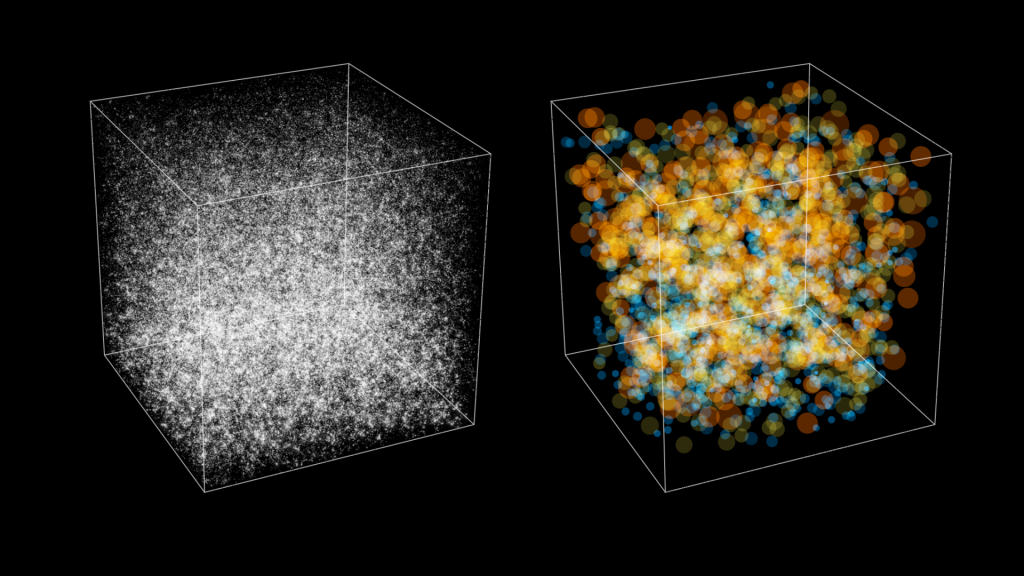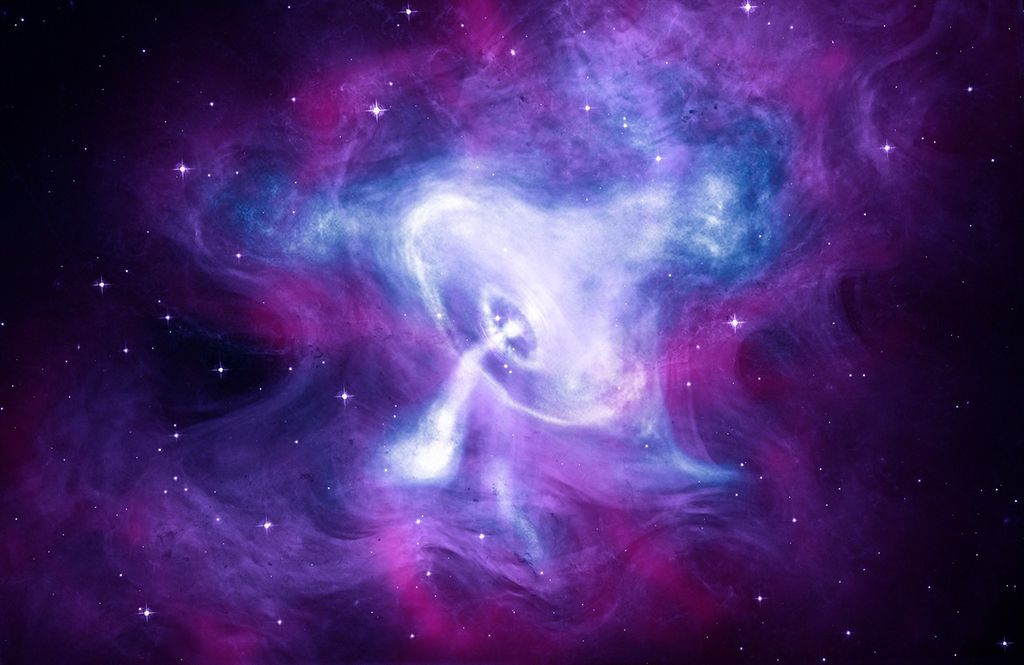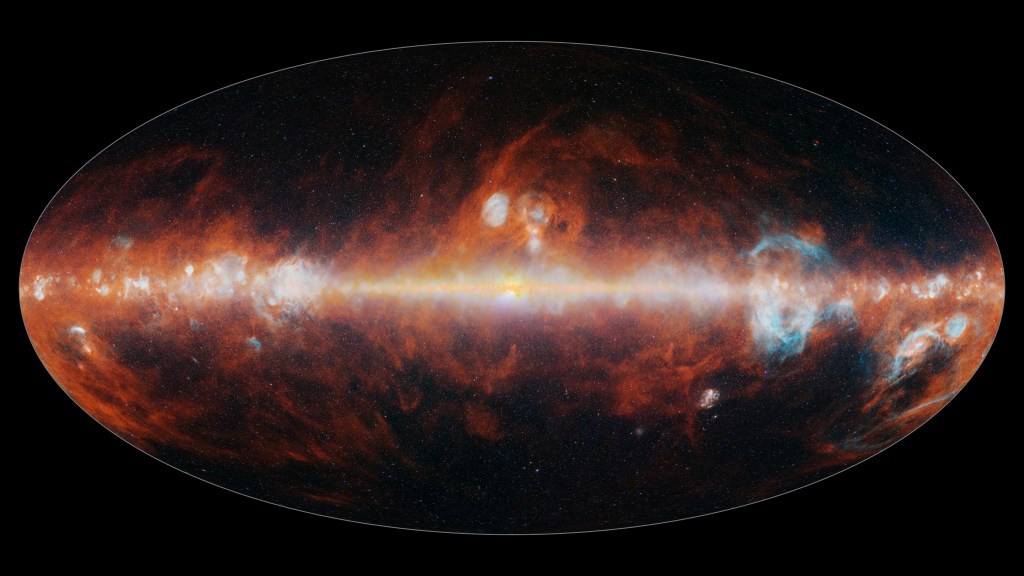1 min read
Ultraviolet Image of Multiple Comet Impacts on Jupiter

Ultraviolet image of Jupiter taken by the Wide Field Camera of the Hubble Space Telescope. The image shows Jupiter's atmosphere at a wavelength of 2550 Angstroms after many impacts by fragments of comet Shoemaker-Levy 9. The most recent impactor is fragment R which is below the center of Jupiter (third dark spot from the right). This photo was taken 3:55 EDT on July 21, about 2.5 hours after R's impact. A large dark patch from the impact of fragment H is visible rising on the morning (left) side. Proceeding to the right, other dark spots were caused by impacts of fragments Ql, R, D and G (now one large spot), and L, with L covering the largest area of any seen thus far. Small dark spots from B, N, and Q2 are visible with careful inspection of the image. The spots are very dark in the ultraviolet because a large quantity of dust is being deposited high in Jupiter's stratosphere, and the dust absorbs sunlight. Scientists will be able to track winds in the stratosphere by watching the evolution of these features. Jupiter's moon Io is the dark spot just above the center of the planet.
- Object NameObject NameA name or catalog number that astronomers use to identify an astronomical object.Jupiter, Comet P/Shoemaker-Levy 9
- Release DateJuly 23, 1994
- Science ReleaseHubble Ultraviolet Image of Multiple Comet Impacts on Jupiter
- CreditCredit: Hubble Space Telescope Comet Team
Share
Details
Last Updated
Aug 17, 2025
Contact
Media
Claire Andreoli
NASA’s Goddard Space Flight Center
Greenbelt, Maryland
claire.andreoli@nasa.gov































